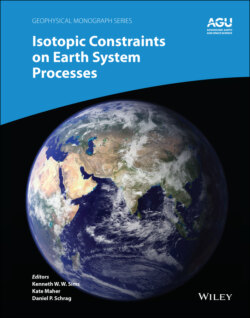Читать книгу Isotopic Constraints on Earth System Processes - Группа авторов - Страница 23
1.2.2. Effective Binary Diffusion Coefficients
ОглавлениеWhen the formulation of the diffusive flux given previously is applied to multi‐component geologically relevant silicate materials, one is faced with the problem that to date only one complete diffusion matrix for an igneous melt (an 8‐component basaltic melt) has been reported (Guo & Zhang, 2018). When there is a lack of a full diffusion matrix for a specific system of interest, what is commonly done is to represent the multi‐component system as if it were a binary system made up of the component of interest with all the other components taken together as a second component. The mass flux in such a pseudo‐binary system will involve a single diffusion coefficient (i.e., n = 2 in equation 1.3) and thus given a diffusion profile of a component i one can in most cases fit the data using equation 1.2 to determine the effective binary diffusion coefficient for component i. Cooper (1968) showed how the effective binary diffusion coefficient of a given component is related to the full diffusion matrix of the system, and he also pointed out that effective binary diffusion coefficients depend not only on the local composition and thermodynamic state (e.g., temperature and pressure) but also on the direction of the diffusive flux in composition space. It follows from this that in order to determine the appropriate effective binary diffusion coefficient for modeling a natural diffusion profile, one needs to run an experiment with a diffusion couple juxtaposing compositions that are as close as possible to those of the far‐field values of the natural system.
